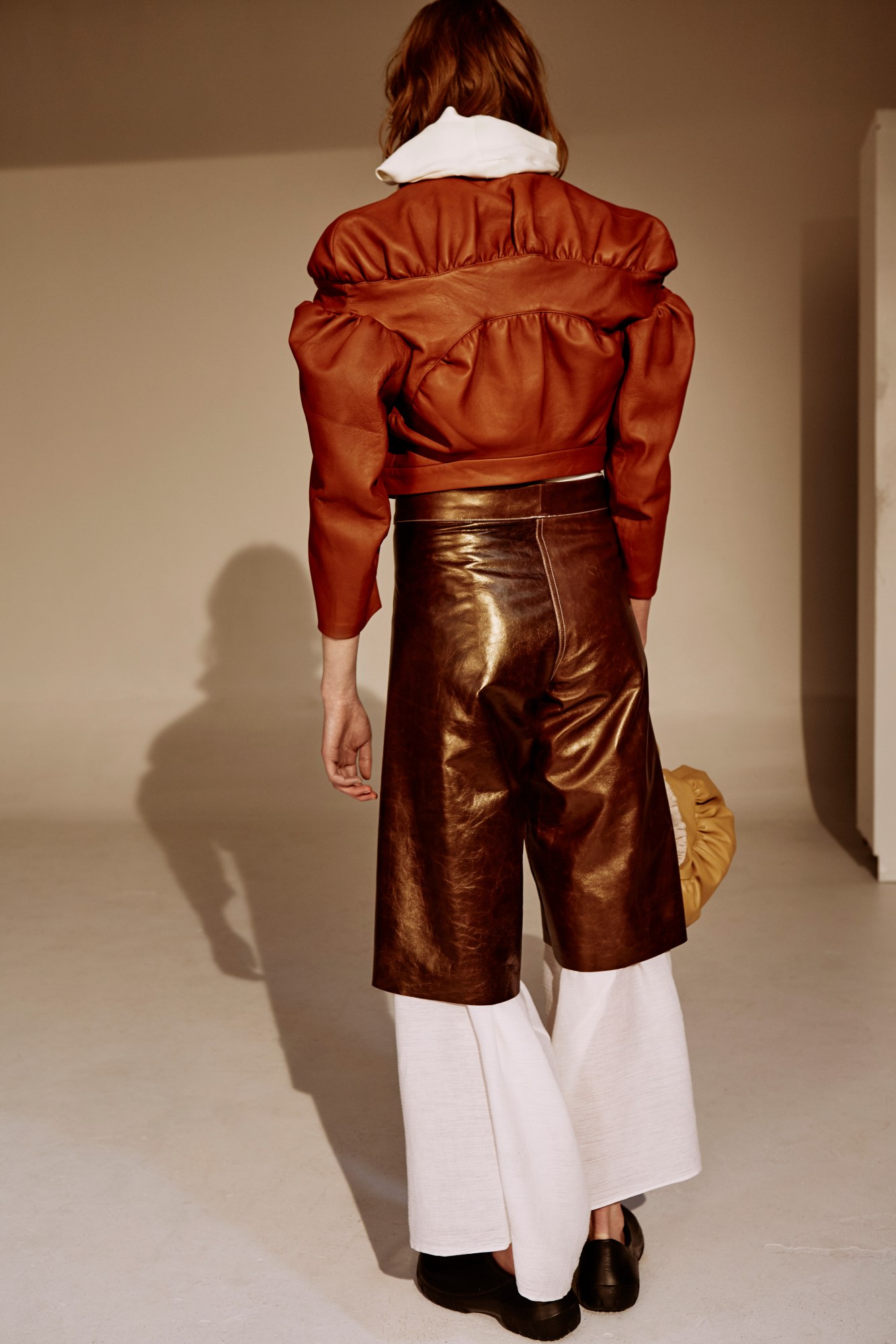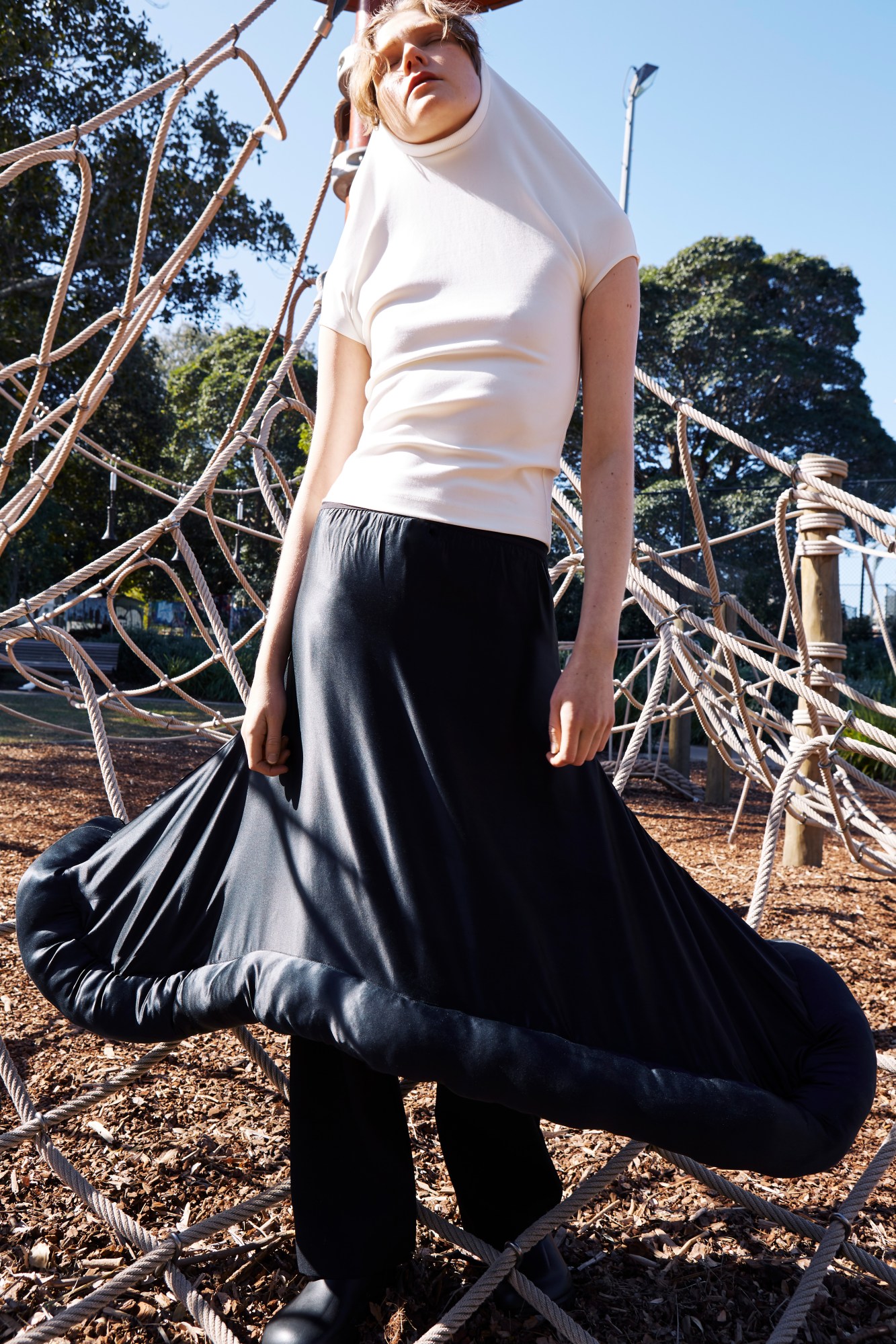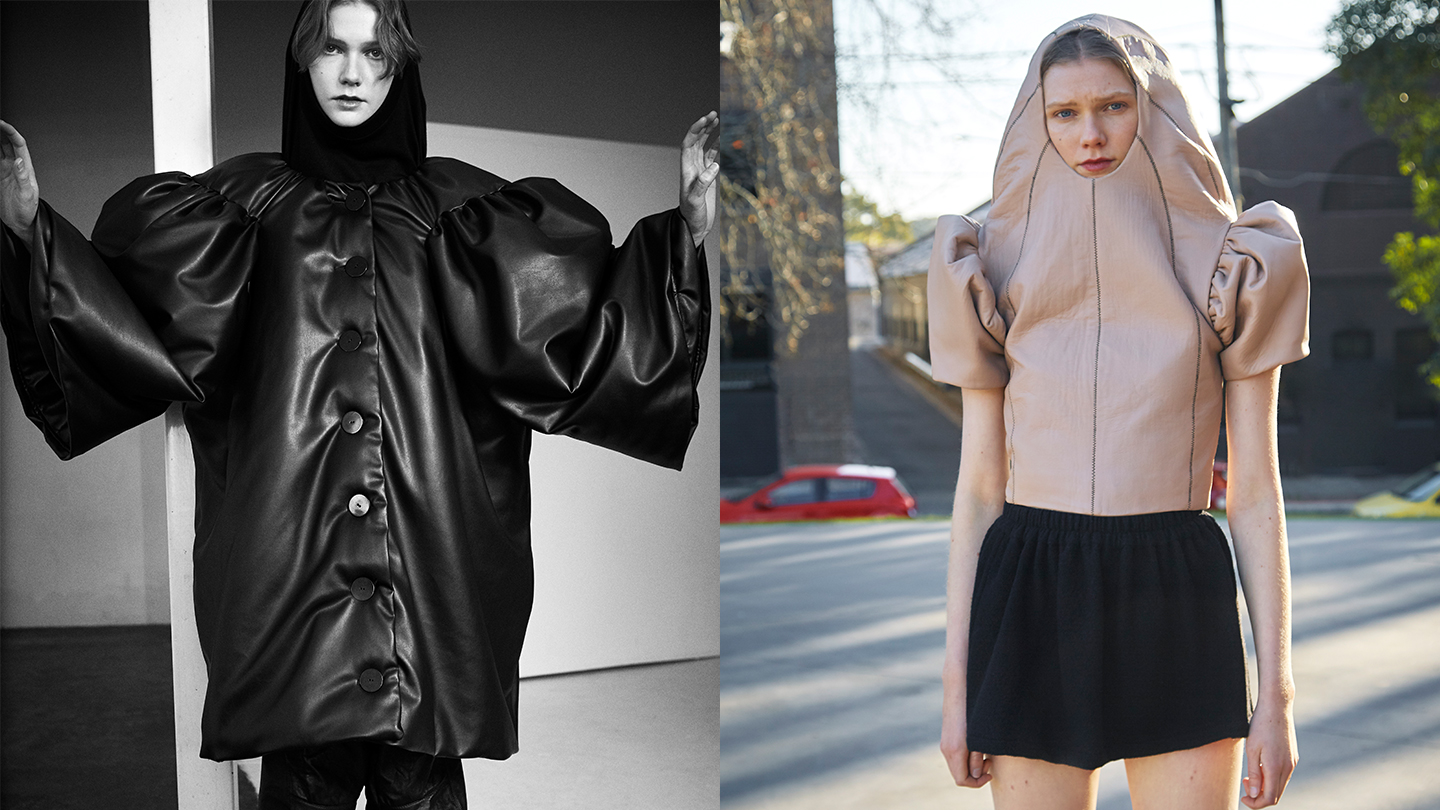After graduating from renowned fashion school Central Saint Martins in London in 2018, Australian designer Jordan Dalah returned to his home country and began working away on his first collection. Now finished, his Spring Summer 2020 collection is the perfect example of the costume inspired fantasy world that Jordan creates as a designer. His designs are rich in storytelling and reminiscent of the theatrical fashion shows of heavyweight designers from the 90s, Galliano for example. But Jordan’s new wave of period costume inspired silhouettes remain uniquely his own, presenting refined and wearable clothing for modern times.
The lookbook for Jordan’s first collection, like the clothes themselves, was created in Australia utilising a team of Australian creative collaborators. Here we take a look at that lookbook and speak to Jordan about his inspirations, influences and the reality of what it takes to build a brand as a young designer.

How did you first become interested in fashion?
My mum’s friend gave me three nude drawings of female figures and I printed loads of them and started drawing dresses over the top of them. That, and the combination of FashionTV and discovering all these incredible runway shows when I first started using the internet. I remember going into my dad’s work and printing loads and loads of images of catwalk shows and taking them home. I didn’t do anything with them I just thought that they were incredible. I was around 12 at the time.
What was the biggest influence you picked up while studying at CSM?
My opinions and experiences of fashion are constantly changing. When I was at CSM they changed, and they are still changing now. As for the most valuable thing I learnt, I guess it was how to pattern cut and sew, but I kind of taught myself how to do that. Studying in such an intense environment also taught me to always push myself. When everyone around you has so many ideas you’re forced to really try and think in different ways. As I went through CSM my focus became less about making conceptual clothes and more about making beautifully finished pieces.

Tell us about the silhouettes you created for this collection.
I’ve always enjoyed working with silhouettes that felt performative and rooted in costume, but in this collection, I wanted to soften those historical reference points with something of the mundane and everyday. I liked the idea of the space between costume and an overly conscious way of dressing. I thought about the transition of a performer through the phases of dress into costume. I imagined a dancer transitioning between her personal, and performative life and wanted to try and capture this duality within my collection. There are moments that are pure fantasy but then those elements of the collection are totally striped back and brought to reality.

And how was the shoe designed?
The shoe is a collaboration between myself and a Melbourne-based brand called actually existing. I showed them some historic images of shoes that I liked and from that point on they continued to develop the idea. They made the entire shoe from hand and from Kangaroo, which I find extremely impressive and they were so willing to explore new and interesting ideas with me. The designers were so willing to design outside typical shoe making parameters, which was refreshing. I found this process to be extremely creative and ultimately the shoes are essential in executing my final vision for this collection.
Did you find that for this collection your design approach changed a lot from your time as a student?
My new collection is, in my eyes, a huge development from my last. Firstly, I wanted to tell a long story with this new collection. It was important for me that this collection sustained what was interesting and theatrical about my last collection, but could also be reimagined in a way so that the wearer can actually visualise the pieces in their wardrobe. I ultimately want to make clothes that people can wear and feel they identify with. That being said, I didn’t want to dilute the things that make my work dramatic and sometimes pompous, but instead give my customer the ability to shop within my brand. When you see my collection, yes there are insanely puffy jackets, and playful leather experimentation, but there is also a lot of simplified basic pieces that I believe enhance and pair really effectively with these more dramatic silhouettes. Costume is a really important reference for me. I’m particularly interested in the idea of taking costume and giving it the functions and finishes of normal everyday garments.

After studying overseas, what does Australia mean to you when it comes to fashion?
I would say that fashion in Sydney has to be very digestible for its consumers. People don’t realise that there are so many layers to fashion and it’s not necessarily trying to make sense of how you can fit an aesthetic into a box. Places like London allow a designer to evolve and grow in an organic way. My mentors and buyers within the European market aren’t interested in finding what box my brand fits in, but rather allow me to evolve naturally. Australians take much less risks with young designers and people like to be told what to wear. Australians love being told what’s fashionable through platforms like Instagram. It’s not that the Australian fashion scene isn’t stylish — it is. Being stylish and having a unique sense of style are two different things.
Building a brand is a million jobs in one – what have you learnt during the process of this collection?
Making a collection is one thing but actually producing it, making sure all the materials are accessible and that the machinists can make all the pieces in a cost effective way is so important, especially as a young designer because otherwise you’re constantly chasing your tail. I’ve learnt that it’s one thing having a grand vision for a collection and another actually executing it in a way that can be reproduced as efficiently as possible.
Knowing how to meet deadlines, give buyers what they want without sacrificing your identity as a designer and having the confidence and financial support to actually produce a collection for stockists is incredibly stressful but an essential part of creating a brand that has longevity to it.

Where do you see yourself in the next five years?
In ten years I see myself financially and emotionally in debt to a larger fashion conglomerate. Just kidding — in ten years time I hope to still be enjoying my work and have the ability to continue making the things I love but perhaps for a customer base that is more established then it currently is.
Credits
Photography Charles Dennington @ M.A.P.
Stylist Charlotte Agnew
Hair Daneil Jianing Liu @ Usfin Atelier
Makeup Isabella Schimid
Model Marland Backus @ Chadwick models
